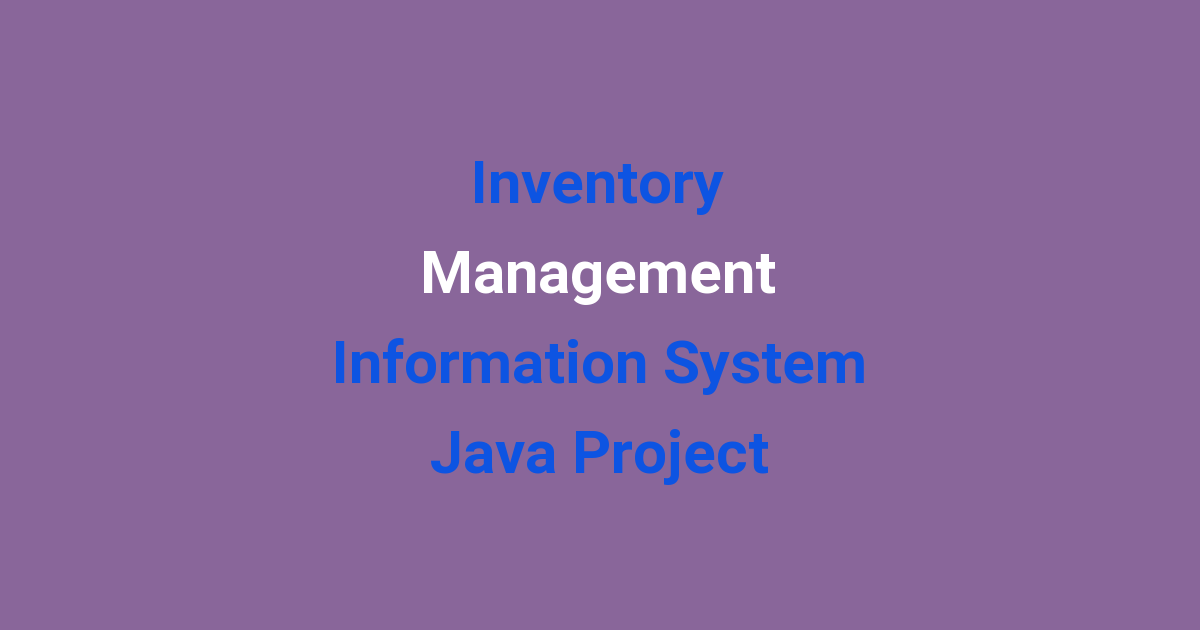Java project for an inventory management information system.
Inventory Management Information System Java Project
Introduction
In today’s fast-paced business environment, efficient inventory management is essential for the success of any organization. Inventory management ensures that the right amount of the right products are available at the right time to meet customer demand. Inefficiencies in inventory management can lead to stockouts, overstocking, increased storage costs, and poor customer satisfaction. The use of technology, such as information systems, can greatly improve the efficiency and accuracy of inventory management processes. One such technology is the Inventory Management Information System, developed using Java programming language.
Problem Statement
The traditional methods of inventory management involve manual entries, paper-based records, and excel sheets. These methods are time-consuming, error-prone, and lack real-time visibility into inventory levels. This results in inefficiencies, inaccuracies, and delays in decision-making. Organizations using outdated inventory management systems face challenges in maintaining optimal inventory levels, tracking stock movements, and forecasting demand accurately.
Existing System
The existing inventory management system relies heavily on manual data entry and paper-based records. This system is prone to human errors, data duplication, and inconsistencies. The lack of real-time data accessibility makes it difficult for stakeholders to make informed decisions. The reliance on excel sheets for inventory tracking is cumbersome and limits scalability. The existing system lacks integration with other business processes, such as sales and procurement, leading to siloed information and disjointed operations.
Disadvantages
– Manual data entry leads to errors and inaccuracies.
– Lack of real-time visibility into inventory levels.
– Inefficient tracking of stock movements.
– Limited scalability with excel-based inventory tracking.
– Siloed information due to lack of integration with other business processes.
Proposed System
The proposed Inventory Management Information System will be developed using Java programming language. This system will automate inventory management processes, improve data accuracy, and provide real-time visibility into inventory levels. The system will integrate with other business processes, such as sales and procurement, to provide a holistic view of operations. The use of Java will ensure cross-platform compatibility, scalability, and security of the system. The system will include features such as barcode scanning, automated reordering, real-time inventory updates, and customizable reports.
Advantages
– Automation of inventory management processes.
– Improved data accuracy and reliability.
– Real-time visibility into inventory levels.
– Integration with other business processes.
– Cross-platform compatibility and scalability.
– Enhanced security features.
Features
The Inventory Management Information System developed using Java will have the following key features:
– Barcode scanning: Enables quick and accurate tracking of stock movements.
– Automated reordering: Automatically generates purchase orders based on inventory levels.
– Real-time inventory updates: Provides up-to-date information on stock levels.
– Customizable reports: Allows users to generate customized reports for analysis.
– Integration with other business processes: Seamless integration with sales and procurement systems.
– Cross-platform compatibility: Can be accessed from any device with internet connectivity.
– Enhanced security features: Role-based access control and data encryption.
Conclusion
In conclusion, the Inventory Management Information System developed using Java programming language is a powerful tool for organizations looking to streamline their inventory management processes. By automating manual tasks, improving data accuracy, and providing real-time visibility into inventory levels, the system will help organizations optimize their inventory levels, reduce costs, and improve customer satisfaction. The system’s integration with other business processes, scalability, and security features make it a valuable asset for any organization looking to stay competitive in today’s dynamic business environment.

